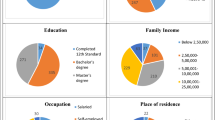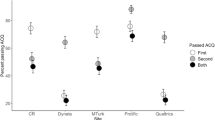Abstract
With the rapid development of mobile Internet, its content and applications are becoming more and more abundant, and android system occupies an important share of the mobile application software market. Due to Android’s own openness, more and more malicious software and imitative software have appeared, and users are also facing more and more risks in operating the software. Therefore, the credibility of the mobile application becomes a pivotal measure of its quality . Credible demand analysis analysis is one of the key steps in the process of software construction. This paper presents a credible demand analysis method driven based on risk driven.





Similar content being viewed by others
References
Mawston, N. (2016). Strategy analytics. Android shipped 1 billion smartphones worldwide in 2016. http://www.strategyanalytics.com/default.aspx?mod=reportabstractviewer&a0=10539.
China Mobile Internet Survey Report 2013–2014 [OL][2015-05-01]. http://www.cnnic.cn/hlwfzyj/hlwxzbg/ydhlwbg/201408/t20140826_47880.htm.
Yuelin, C. (2016). Research and application of reliability test of mobile application based on behavior declaration. Beijing University of Technology, 2016.
Arzt, S., Rasthofer, S., Fritz, C., et al. (2014). Flowdroid: Precise context, flow, field, object-sensitive and lifecycle-aware taint analysis for android apps. ACM Sigplan Notices, 49(6), 259–269.
Gao, C. (2014). The research and application of credibility measurement model based on software behavior. Beijing university of technology, 2014.
Lenzini, G., & Tokmakoff, A. (2007). Managing trustworthiness in component based embedded systems. Electronic Notes in Theoretical Computer Science, 179, 143–155.
Chen, Y. (2005). Research on requirements prioritization management of trustworthy software product. In The 2nd international conference on e-business and e-government (EI:20112914160478), 2011,5.
Li, W., Dai, Y.-X., & Lian, Y.-F. (2009). Context sensitive host-based IDS using hybrid automaton. Journal of Software, 20, 138–151.
Author information
Authors and Affiliations
Corresponding author
Rights and permissions
About this article
Cite this article
Yu, X., Feng, D. Research on Credible Demand Analysis Method Based on Risk Driven Mobile Application Software. Wireless Pers Commun 103, 785–796 (2018). https://doi.org/10.1007/s11277-018-5477-z
Published:
Issue Date:
DOI: https://doi.org/10.1007/s11277-018-5477-z




